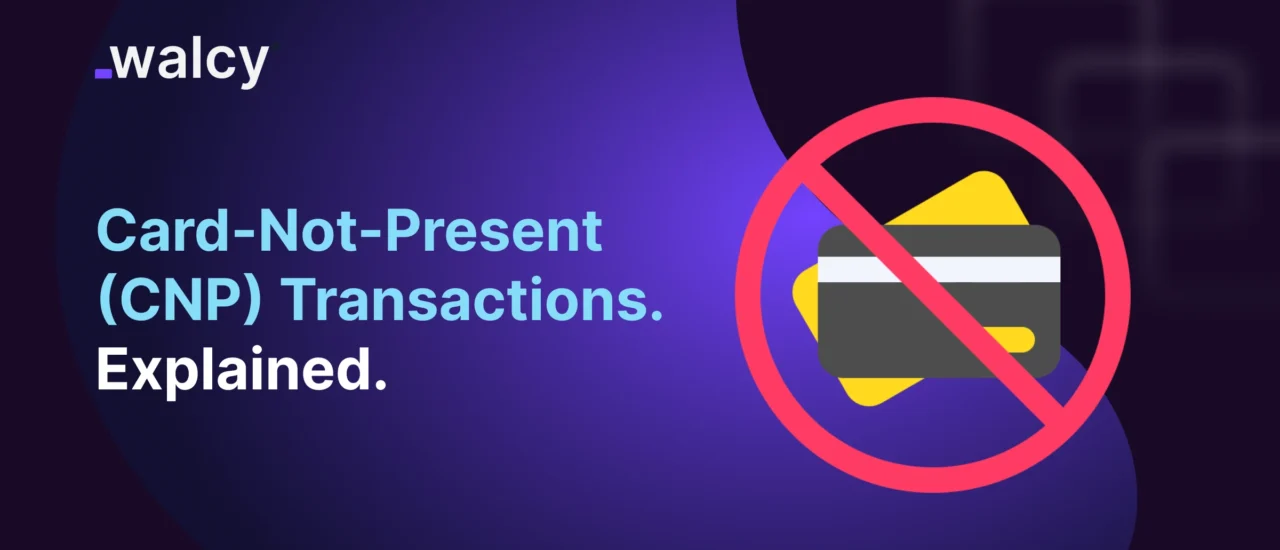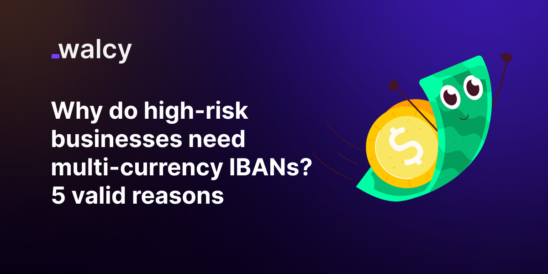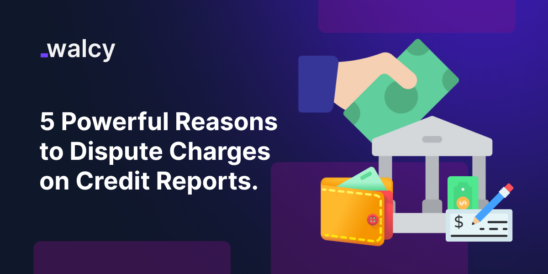With the advancement of technology, life has been much easier these days. No sector is untouched by modern innovation.
Even in the payment industry, several new ways have been introduced to make life easier.
One of many such innovations is the Card-Not-Present Transaction.
As per “The Fintech Times,” In 2023, CNP transactions comprised 36% of all debit transactions and 45% of debit spending, reflecting a 5.2% year-over-year growth.
It indicates that the adaptation of CNP transactions is increasing rapidly.
This blog will explore everything related to Card-Not-Present (CNP) Transactions, including why they are at fraud risk, ways to accept CNP transactions securely, associated charges, and more.
What is a Card-Not-Present (CNP) Transaction?
A card-not-present (CNP) transaction is a payment that is made without the cardholder being physically present with the card during the transaction.
In other words, a CNP transaction takes place while neither the credit card nor the cardholder is physically present.
Usually, these transactions take place via mail order, phone, or internet. To securely execute payments, CNP transactions depend on card information such as the card number, and CVV code. There will be no need to swipe or insert the card.
Compared to in-person transactions, CNP transactions are more likely to be fraudulent, even if they are more convenient for remote and online purchases.
To prevent unwanted use and guarantee safe payment processing, companies frequently utilize sophisticated security measures, such as encryption, two-factor authentication, and fraud detection software.
Examples of Card-Not-Present Transaction
These days CNP transactions occur almost every day and everywhere. Some of the most common examples of CNP transactions are:
-
Shopping from e-commerce platforms
Online shopping is undoubtedly the most common among all globally. Be it clothes, electronics, groceries, or health care medicines, most of us prefer purchasing them online through e-commerce platforms.
Such platforms have their own integrated payment methods through which you can make CNP transactions.
-
Virtual Gift Card Purchases
Purchasing virtual gifts has also been much more popular these days, especially among youngsters. Since everything will be online, there will be no involvement of physical cash or cards. The only option is to make payment online just by entering the card details.
-
Remote professional works
The culture of working remotely is increasing every day. You must make CNP transactions to receive payment, especially while working on platforms like Upwork and Fiver.
Not just in freelancing jobs, but also in remote consultation and legal advisory services, CNP transactions occur.
-
Purchasing Software licenses and digital products
Another example is while purchasing various software licenses and digital products. It is most useful for tech-savvy individuals. Also, it is used for purchasing premium services of different tools.
How CNP Transactions Works?
As mentioned, card-not-present (CNP) transactions occur when the cardholder or their physical card is not available during the payment process.
For this, payers initially provide card details via an online payment gateway, or mobile app, or communicate through a secure method, like a phone call or email.
After the card information is submitted, the payment gateway encrypts the data and forwards it to the card issuer for authorization.
The issuer then verifies the information, checks for sufficient funds, and employs fraud detection techniques, such as analyzing transaction patterns or requesting additional authentication (e.g., OTP).
If the transaction is confirmed as legitimate, the issuer approves it, and the payment is processed.
To further safeguard against fraud, advanced security measures like tokenization and 3D Secure are commonly implemented.
Types of Card-Not-Present Transactions
Some major types of CNP transactions include:
- eCommerce shopping carts
- Mail order purchases
- Phone orders
- Online invoices
- Automatic billing
- Website payments
Benefits of CNP Transaction
- Convenience
Customers can purchase or pay using CNP transactions at any time and from any location without having to show their card in person.
This is particularly beneficial for subscription-based goods, distant services, and internet shopping. In a nutshell, it is way more convenient than other methods.
-
Increased Accessibility for Global Markets
Since anyone can transact from anywhere, it is accessible globally. People from India can transact for products or services in the USA.
For instance, a subscription service like Netflix can charge customers worldwide, regardless of location, with no need for physical card validation in each country.
-
Increased sales opportunity
Businesses with access to global markets have the option to expand their services worldwide. It will result in higher sales and income for multinational corporations.
-
Reduced Operational Costs
As CNP transactions eliminate the need for point-of-sale (POS) systems, they are more affordable, particularly for startups or small enterprises. It reduces the operating costs and also makes the process smoother.
-
Customized Payment Methods:
CNP transactions enable the use of different forms of payment such as digital wallets (Apple Pay, Google Pay) and buy-now-pay-later services (Klarna, Afterpay).
This flexibility attracts youth or tech-savvy consumers, boosting revenue by providing customized payment choices based on their individual needs.
Drawbacks of CNP Transaction
Some of the major drawbacks include:
- Increased risk of fraud:
As the cardholder has no physical presence during the transaction, CNP payments are more susceptible to fraud.
Fraudsters may effortlessly get card information through phishing, data breaches, or card skimming and then conduct fraudulent purchases.
- Higher processing fees:
Comparatively, a card-not-present transaction costs more than the card-present transaction.
Payment processors frequently charge greater transaction fees for CNP payments than card-present transactions.
These costs are connected with an increased risk of fraud and the need for enterprises to undertake additional security measures.
It can rise quickly for firms, particularly those who handle a high volume of CNP transactions.
Read about: International Payment Fees | The Essential guide.
- Customer trust issues
Customers may have security issues over sending their card information as the transaction occurs remotely, which may affect the conversion rate.
Since payment fraud incidents are increasing, it is a genuine challenge that needs to be addressed.
- Lack of Customer Verification:
Since merchants cannot physically verify the cardholder’s identity, it is easier for unauthorized users to make purchases.
While security mechanisms such as CVV and 3D Secure assist in preventing this, they are not flawless, and some users may evade the verification process entirely.
- Dispute and chargeback risks
The lack of a physical transaction raises the potential of chargebacks (when a client issues a charge), which may be costly and detrimental for retailers.
CNP transactions are prone to result in chargebacks, especially in sectors like downloadable content and subscription services, where illicit purchases are harder to identify and prevent.
CNP Transaction Fraud
Card-not-present fraud has long been the dominant form of payment fraud.
It is a sort of payment fraud that occurs when a card is not provided to a merchant for visual verification.
Typically, it occurs when a payment card or card information has been stolen (name, card number, and 3-digit static card security code on the back) or purchased on the Dark Web.
According to the Federal Trade Commission, customers reported losing about $8.8 billion to fraud in 2022, an increase of more than 30% from 2021.
CNP fraud losses are expected to reach $28 billion globally by 2026, up 40% from three years ago. The United States and APAC areas are predicted to enjoy the most increase, with annual growth of 13%.
Over 2.13 million cases of CNP fraud in 2023 resulted in the loss of £360.5 million in the U.K. according to the UK Finance Annual Fraud Report. While this is certainly unsettling news, instances of CNP declined by a 4% change from the previous year.
Similarly, according to the European Central Bank, CNP fraud accounted for approximately 63% of the total value of card fraud within the European Economic Area (EEA) in 2022.
Step-By-Step Guide on How CNP Fraud Works?
Unlike other frauds, CNP fraud depends upon digital mechanisms to steal card information. Despite being quite complex, here is a breakdown of how it works in reality:
Step 1: Acquiring credit card information:
In the very first step, card information is gathered through several methods. Some of the most common methods include data breaches, phishing attacks, skimming devices, and purchasing stolen data from the dark web or several illegal platforms.
Step 2: Verifications of acquired details:
After gathering the data, fraudsters make verification by making a small transaction. Those transactions are small enough that the cardholder goes unnoticed. However, some fraudsters may use online verification services to ensure the validity.
Step 3: Make unauthorized transactions:
After the stolen data is verified, it’s time to make a transaction. They use the stolen cards to purchase needful goods and services.
Even if it still goes unnoticed, they shall make much larger transactions.
Step 4: Covering tracks
Once the transaction is completed, it’s time to quickly close the transaction routes and go unnoticed. It might include tactics such as changing account details and abandoning the fraudulent accounts.
Also to minimize the risk, they shall use anonymized payments such as cryptocurrencies.
Read about: International Payment: Challenges and Solutions
Ways To Be Safe From CNP Fraud:
It is crucial to be safe from CNP fraud as it is increasing rapidly. Some of the most common ways are as follows:
- Using Advanced Verification Tools:
The best way to be safe from fraud is to use various verification tools before making transactions. These tools help to identify suspicious addresses and people.
Moreover, people can add an extra layer of security to their transaction process such as two-factor authentication and requiring CVV code.
- Regularly monitoring transactions:
Another major way to be safe is to regularly track and monitor your transactions. You can take action by collaborating with the card provider if anything suspicious happens.
Similarly, you can also set limits for the transaction amount. To minimize the loss.
- Use of secure payment gateways
Another method to be safe is to use secure payment gateways. While choosing the gateway you have to ensure that the payment provider is using strong encryption and tokenization services.
- Be aware of phishing;
The final way to be safe from fraud is to be aware of phishing attacks and scams. You should know how scammers steal your information and how to be safe from it.
Read about: Online Payment Security: Best Practices to Keep Your Transactions Safe
Card-Not-Present Transaction Limit
The transaction limit for Card-Not-Present (CNP) payments varies based on the issuing bank, merchant restrictions, and transaction type.
Unlike card-present transactions, which frequently have defined restrictions for contactless payments (e.g., tap-to-pay), CNP transactions don’t have a uniform limit.
However, for personal debit and credit cards, issuers may allow up to the full available balance for CNP transactions, but additional authentication (e.g., OTP or 3D Secure) might be required for amounts exceeding a certain threshold.
CNP Transactions Costs
CNP transactions often cost more than CP transactions owing to higher fraud risk and additional security measures.
These costs vary according to the payment processor, transaction volume, industry, and geographical location.
Here’s a breakdown of the major cost components:
- Payment Processing fees:
This cost is determined by the payment processor and varies accordingly.
However, it typically ranges between 2.5% to 3.5 % of the total transaction amount.
- Fraud Prevention Costs
This cost is only for businesses. If any business wants to invest in a real-time fraud detection system and tokenization, they shall have to pay around 0.05$ to 0.25 $ per transaction. However, actual costs depend upon the service provider.
- Chargeback Fees:
It might not be applicable every time however if any disputes occur, merchants might need to bear chargeback fees between 15$ to 50$ additional to the lost amount.
- Currency conversion and cross-border fees
After payment processing, fraud prevention, and chargeback fees, customers have to bear currency conversion fees and cross-border payment fees.
The currency conversion fee is 1% to 3% of the transaction amount, and cross-border payment charges also vary from country to country, ranging from 0.5% to 1 %.
- Subscription fees
Lastly, customers have to pay Subscription or monthly fees to the payment gateways or payment processors. It generally ranges from $10 to $100.
Conclusion
To conclude, CNP transactions are an essential component of modern transactions, providing exceptional ease and accessibility to businesses and consumers globally.
However, they provide their own set of concerns, such as increased fraud risks and processing costs. Businesses and individuals must be aware of the potential fraud and take the necessary steps to mitigate it.
As digital payment technology advances, the future of CNP transactions looks even more promising, encouraging a smooth and safe online payment experience.
Read about: Major Types of Cross-Border Payments in 2025; Detailed Guide
Do follow us on Facebook and LinkedIn, to stay connected with us.



